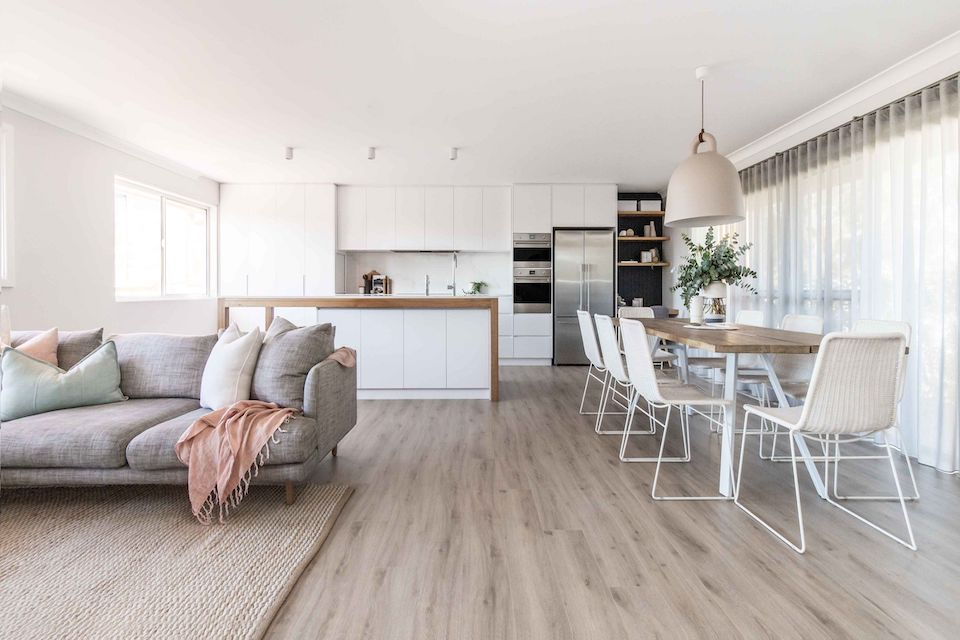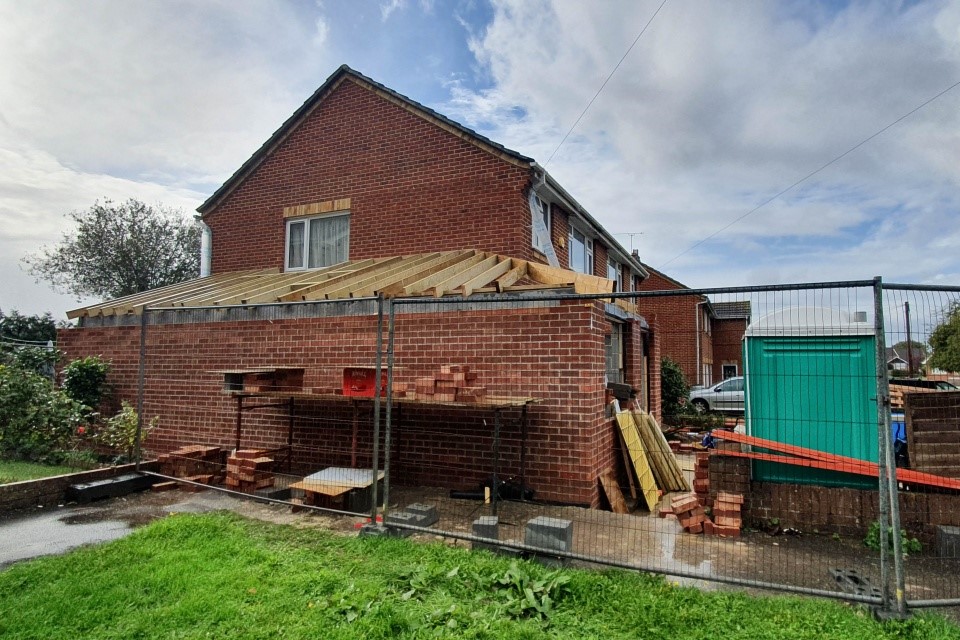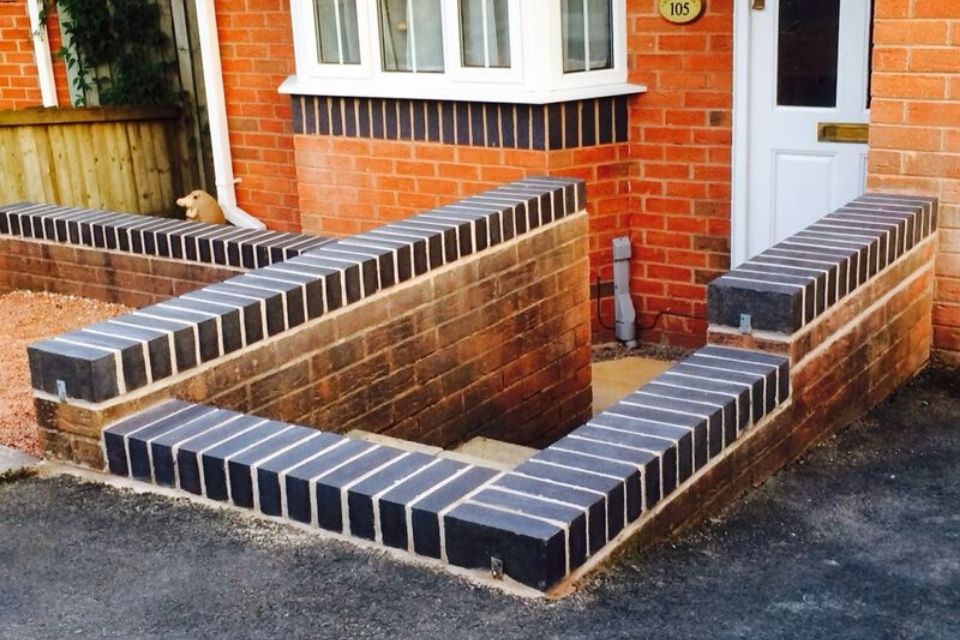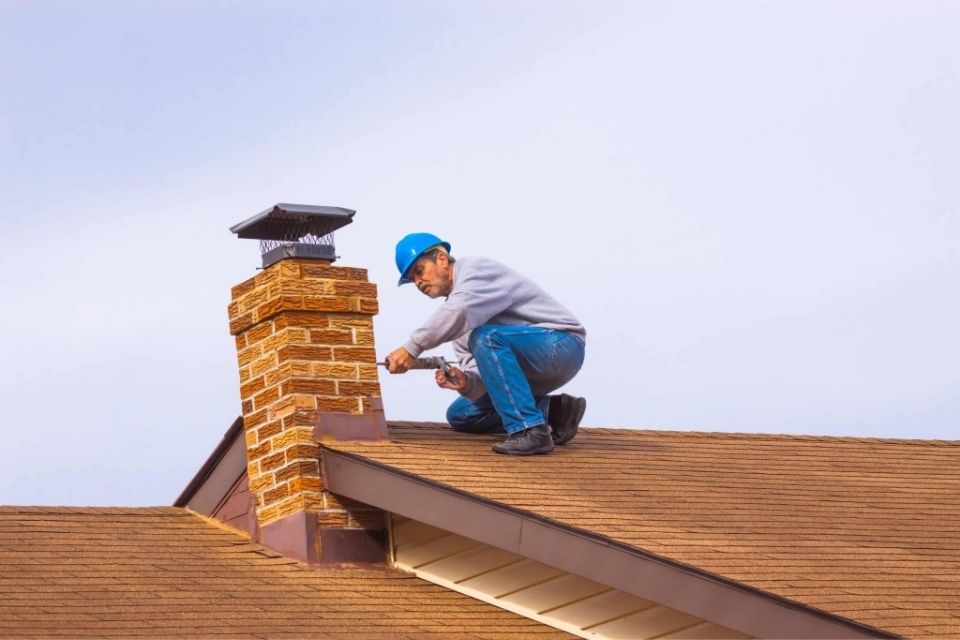How Much Does it Cost to Remove a Load Bearing Wall?
The average cost of knocking down an internal wall is around £1,000-£2,500. It is worth noting that there are several costs involved with this type of work.
Why would such a wall be removed anyway?
Removing a load bearing wall is a fantastic way to free up more space in a room, or even combine two rooms into one, making it a valuable home renovation project.
The labour costs for removing an internal wall should be around £400-£800.
You should also budget approximately £200-£300 for a structural engineer, and you may also want to hire a building inspector who will charge around £150-£200.
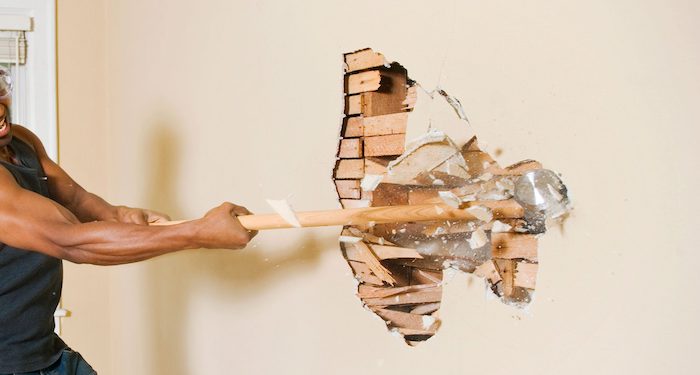
You may also need to hire a skip to get rid of the wall materials, which will range from £200 to £500.
You may also need to hire a skip to get rid of the wall materials, which will range from £200 to £500.
Here are some other factors to consider:
The costs of removing an internal wall can also be affected by your location in the UK. Homeowners that are based in the London area can expect to pay more for the cost of labour than those based in the North or other parts of the UK.
Load Bearing Wall Removal Prices
Below is a list of the internal wall removal prices for various jobs:
| Job | Average Cost |
|---|---|
| Remove a partition wall of a single doorway (around 1m) | £1,000-£1,700 |
| Remove a partition wall of a double doorway (around 2m) | £1,400-£2,000 |
| Remove a partition wall of a large open plan (around 4m) | £1,700-£2,500 |
| Remove a load bearing wall of a single doorway (around 1m) | £1,100-£1,600 |
| Remove a load bearing wall of a double doorway (around 2m) | £1,400-£2,000 |
| Remove a load bearing wall of a large open plan (around 4m) | £1,700-£3,000 |
- How Much Does it Cost to Remove a Load Bearing Wall?
- What are the Supply Costs of Removing an Internal Wall?
- What are the Additional Costs of Removing an Interior Wall?
- Tradesmen Costs for Internal Wall Removal
- How Long Does It Take to Remove an Interior Wall?
- Types of Interior Wall
- Benefits of Removing an Internal Wall
- FAQs
- Sources
What are the Supply Costs of Removing an Internal Wall?
When you remove a load bearing wall, you will need to have an RSJ installed to ensure your home remains structurally safe with proper support. You can purchase an RSJ yourself, however, you should not attempt to install an RSJ as a DIY job.
This is a very difficult and complex job that should only be completed by a professional. There are several calculations involved with installing an RSJ and only a professional is qualified to make those calculations and ensure that your home remains safe.
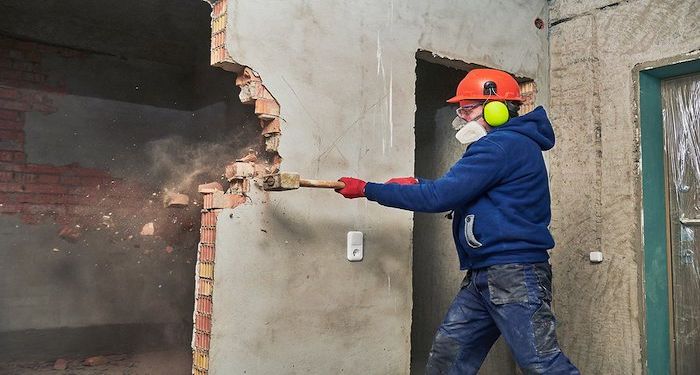
The table below shows the prices for various supplies that are required when removing an internal wall:
| Types of Supply | Average Cost |
|---|---|
| Universal beams | £50-£120 per metre |
| Universal columns | £50-£120 per metre |
| Double beams | £50-£100 per metre |
| Lintels | £16-£33 per metre |
| Special lintels | £60-£120 per metre |
| Parallel flange channel | £20-£100 per metre |
| T-beam | £8-£20 per metre |
What are the Additional Costs of Removing an Interior Wall?
There are several additional costs you may need to consider when removing an internal wall. Below is a list of the additional costs that you may need to budget for with this type of work:
Internal Renovation
When you remove an internal wall from your home, you may also want to complete some other internal renovations to divide spaces effectively. This can include stud wall installations, installing an RSJ, blocking a doorway, or opening a new door or window.
The average cost for completing internal renovations is around £200-£300 per square metre.
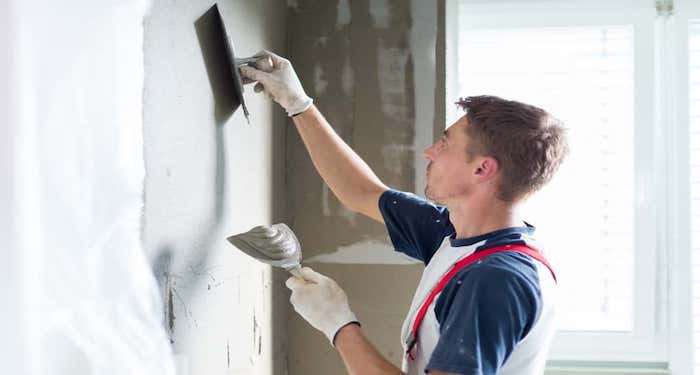
The average cost for completing internal renovations is around £200-£300 per square metre.
House Extension
When you are renovating your home, you may be interested in installing a home extension . This can add a lot of space to your home and can provide you with a lot of opportunities.
The average cost for installing a house extension is around £22,500-£125,000. This will vary depending on the size of the extension and the materials used.
Painting and Decorating
Removing an internal wall will affect the décor of your home. You will likely need to redecorate some parts of your home. This can include painting or wallpapering.
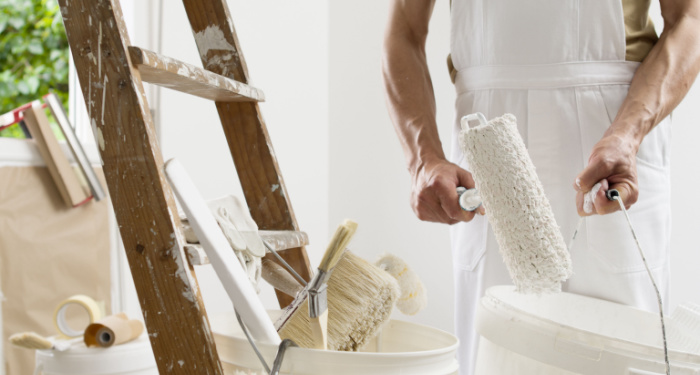
The average cost to hire a professional to paint or decorate your walls for you is around £200-£650 per room. The cost will depend on the size of the room and the materials used.
Plastering Work
The removal of an internal wall will usually require some plastering work on the remaining walls in the home, particularly the parts where the removed wall once lined up with the remaining walls.
The average cost for plastering is around £150-£250 per wall.
New Flooring
If you are opening up your internal space, then you may need to install new flooring to ensure that the flooring in the open space matches up correctly.
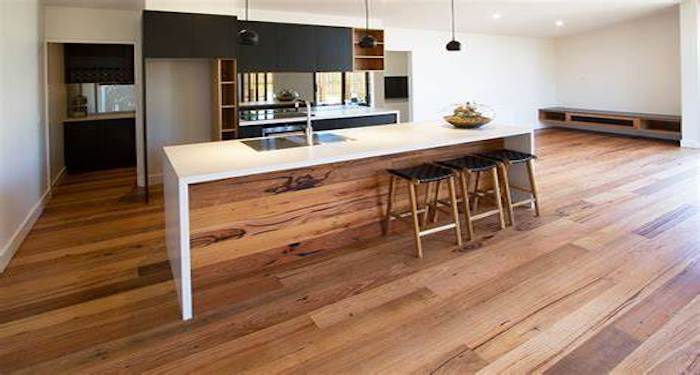
The average cost to install flooring in a typical room is around £400-£1000. The overall cost will depend on the size of the room and the type of flooring you choose.
Tradesmen Costs for Internal Wall Removal
In this section, we will take a look at the tradesman costs involved with removing an internal wall.
The majority of builders will charge around £150-£250 per day, and they will usually work in teams of at least two when removing an internal wall. It is quite a large job and can be quite difficult so they will need together for safety reasons.
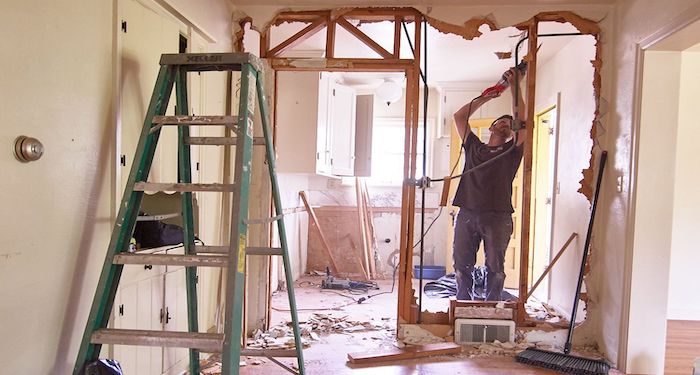
You may also need some help from structural engineers who can come out and make the calculations needed for an RSJ. This applies if you are removing a load bearing wall. The average cost to hire a structural engineer is around £50-£90 per hour.
You will most likely also need to hire a plasterer to come in and finish off the job. You can expect to pay a plasterer around £150-£250 per day.
How Long Does It Take to Remove an Interior Wall?
Here, we will take a look at the timescales you can expect for removing an interior wall.
If you are removing a load bearing wall, the first part of the job involves an inspection by a structural engineer, followed by the installation of temporary support to ensure safety during the removal process. This will usually take no more than 1-2 hours to complete.
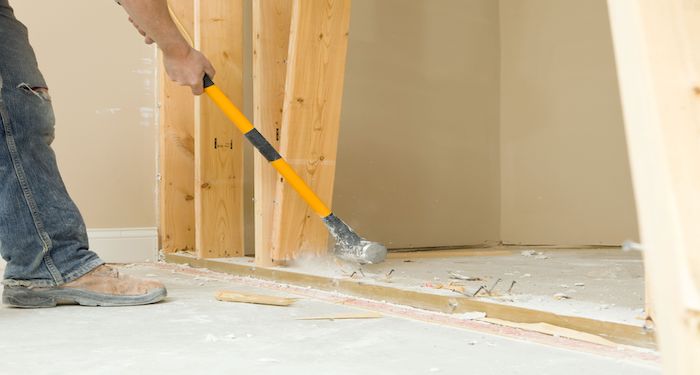
Removing a wall is quite a difficult job and will usually take around 1-2 days, including the installation of an RSJ. The length of time that it takes will be dependent on the length of the wall, the type of wall that is being removed, and the difficulty of the job.
Once the wall has been removed, you will require some plastering work in the room. The time spent on plastering will depend on the size of the room and the amount of plastering that is required. However, the average amount of time this will take is around 6-12 hours.
Types of Interior Wall
There are two main types of interior walls – a partition wall and a load bearing wall. In some cases, a load bearing wall may be a brick wall, which requires additional considerations for removal. Below, we will take a look at the differences between these two.
Partition Wall
A partition wall is a simple wall that does not hold any of the weight of the house. When removing a partition wall, you won’t usually need to install an RSJ as these walls are not needed to hold up the house and keep the house safe.
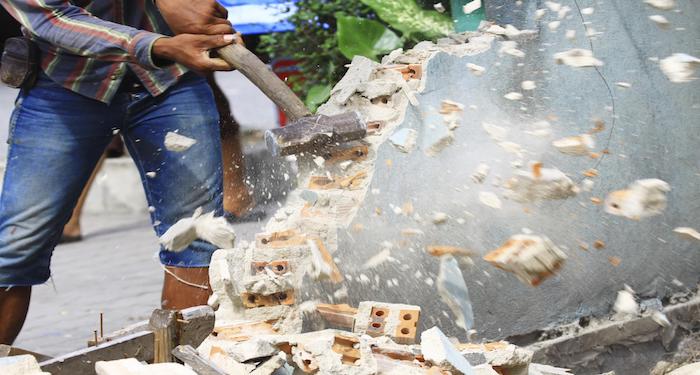
A partition wall is the easiest type of wall to remove and can usually be removed quite quickly. These walls tend to separate two adjacent rooms, such as a living room and a dining room.
Load Bearing Wall
A load bearing wall holds up the weight of the house. You can’t simply remove a load bearing wall as it can be dangerous and will affect the structural aspects of the home.
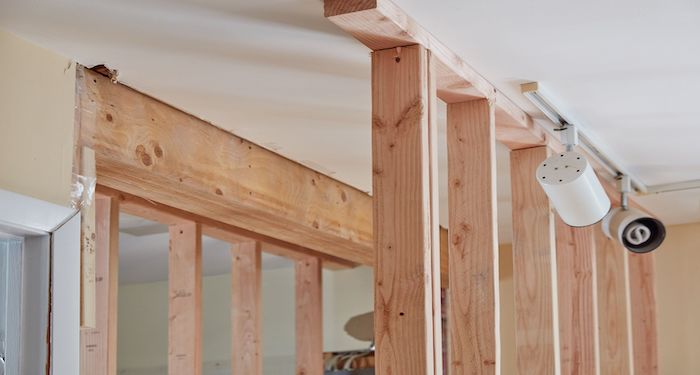
When removing a load bearing wall, there are a lot of calculations involved to determine the appropriate structural beam needed to support the weight of the structure. These calculations enable the tradesperson to figure out which an RSJ needs to be installed to support the weight of the structure.
Benefits of Removing an Internal Wall
There are several benefits to removing load bearing walls in your home. Below is a list of the main benefits of this type of work:
Additional Space
Removing an internal wall can provide your home with a lot of additional space. You can choose to open out a room to create a large open plan living space such as a kitchen/dining room or a living room/dining room.
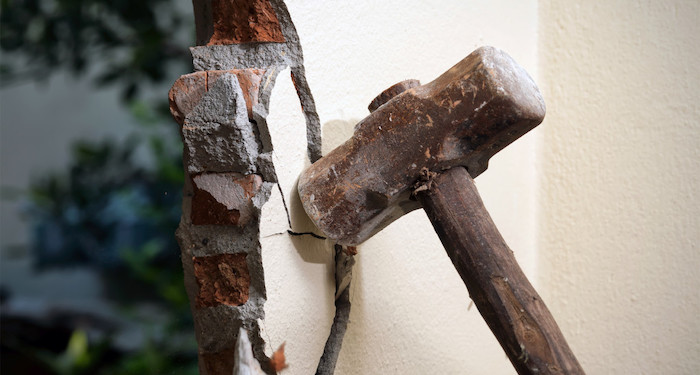
This can provide you with a lot more opportunities when it comes to decorating and furnishing your home.
Brighten the Space
Walls can create shadows in the home, and small rooms can appear dull and dark. When you remove an internal wall to open out your living space, it can really brighten the space up and make it look a lot more inviting.
Transform the Home
Removing internal walls can completely transform your home and make it look completely different. However, improper removal can lead to issues such as sagging floors, which compromise the structural integrity of your home.
Modern homes are adopting the open plan living space idea more and more. With this in mind, removing an internal wall can modernise your home and make it seem like a completely different home.
FAQs
Q: Do I need planning permission to remove an internal wall?
A: You don’t typically need to obtain planning permission to remove an internal wall as it usually falls under the permitted development rights. However, if your home is a listed building, then you will need to obtain planning permission. If you live in a listed building, you will have to pay around £200 to apply for planning permission.
Q: Do I need to follow building regulations when removing an internal wall?
A: If you are removing a load bearing wall, you will need to adhere to building regulations rules. When you apply for building approval through your local authority, this can cost up to £650. For smaller projects, a building notice can streamline the approval process by allowing work to proceed with minimal documentation.
You will need to have inspections throughout the process to ensure that the work is complying with building regulations. This will also offer reassurance that the structure of your home remains safe and sound.
Q: Do I need a structural engineer when removing an interior wall?
A: If you are removing a load bearing wall, you will need to hire an architect or a structural engineer as they will need to work out the calculations needed to install an RSJ. This is necessary so that the relevant type of support is put in place to ensure your home remains structurally sound and safe.
Q: Can I remove my internal wall myself?
A: You can remove a partition wall if you would like to yourself. However, you should always have someone to work with you for safety reasons. Since it’s such a large job, many people prefer to leave it to professionals to do this type of work rather than attempt it as a DIY job.
If the wall is a load bearing wall, you should never attempt to remove this type of wall yourself.
There are many calculations needed to remove a load bearing wall to ensure that the appropriate type of support is put in place to support the structure of your home.
Q: How do I know if my wall is a load bearing wall?
A: There are several ways for you to confirm whether or not a wall is load bearing. One of the simplest ways to identify a load bearing wall is the check if the wall is parallel to the floor joists. If it is, then it is probably not a load bearing wall.
Load bearing walls typically face the joists at a 90-degree angle. If your home has a basement, you can identify the load bearing wall by going down into the basement and seeing if there is a support wall or a beam facing the same way. In this case, it may be a load bearing wall.
If you are unsure about whether or not the wall you want to remove is load bearing, then you should contact a structural engineer or an architect who can come and inspect the wall and determine whether it is load bearing or not.

